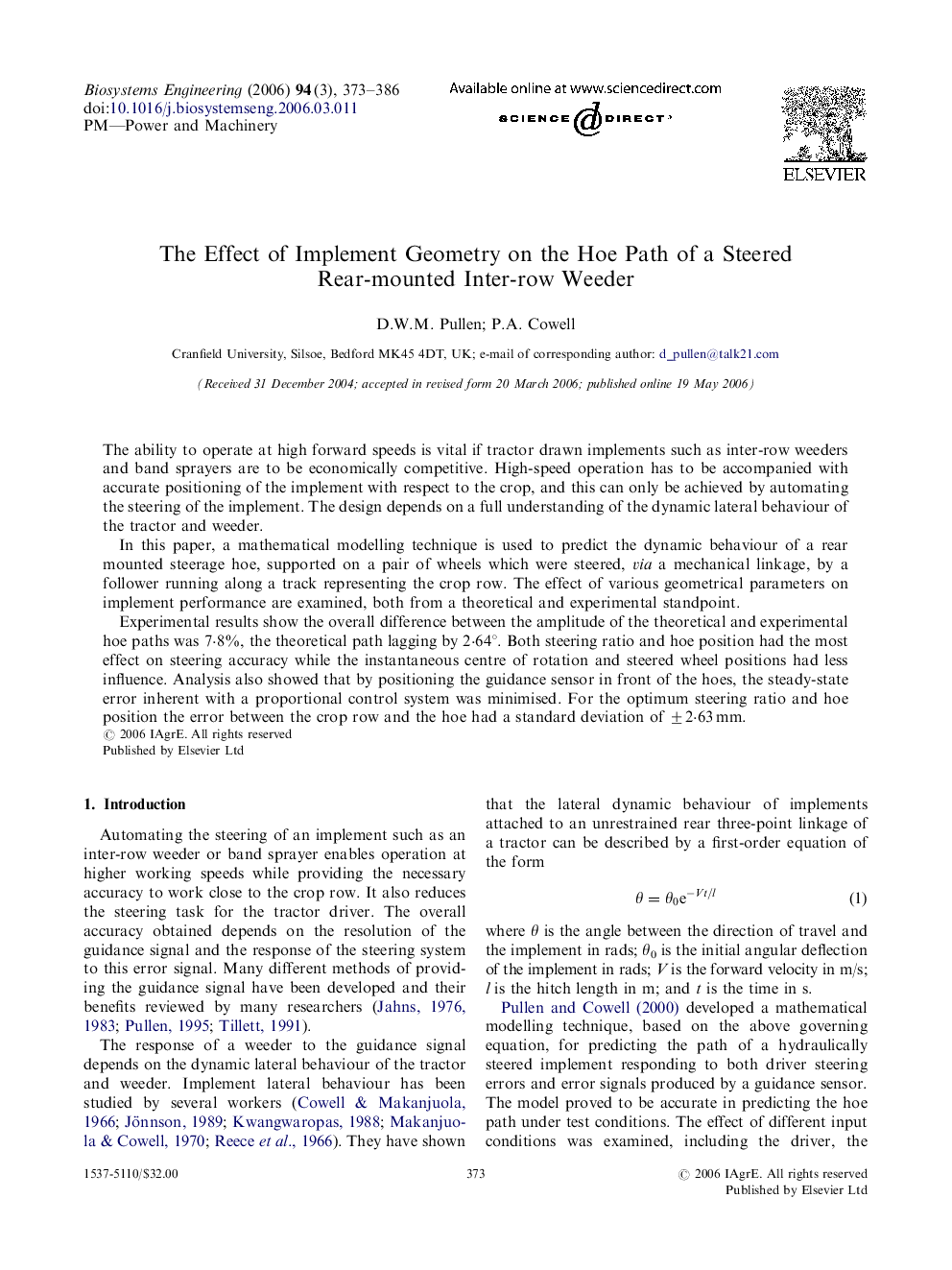| Article ID | Journal | Published Year | Pages | File Type |
|---|---|---|---|---|
| 1712730 | Biosystems Engineering | 2006 | 14 Pages |
The ability to operate at high forward speeds is vital if tractor drawn implements such as inter-row weeders and band sprayers are to be economically competitive. High-speed operation has to be accompanied with accurate positioning of the implement with respect to the crop, and this can only be achieved by automating the steering of the implement. The design depends on a full understanding of the dynamic lateral behaviour of the tractor and weeder.In this paper, a mathematical modelling technique is used to predict the dynamic behaviour of a rear mounted steerage hoe, supported on a pair of wheels which were steered, via a mechanical linkage, by a follower running along a track representing the crop row. The effect of various geometrical parameters on implement performance are examined, both from a theoretical and experimental standpoint.Experimental results show the overall difference between the amplitude of the theoretical and experimental hoe paths was 7·8%, the theoretical path lagging by 2·64°. Both steering ratio and hoe position had the most effect on steering accuracy while the instantaneous centre of rotation and steered wheel positions had less influence. Analysis also showed that by positioning the guidance sensor in front of the hoes, the steady-state error inherent with a proportional control system was minimised. For the optimum steering ratio and hoe position the error between the crop row and the hoe had a standard deviation of ±2·63 mm.
